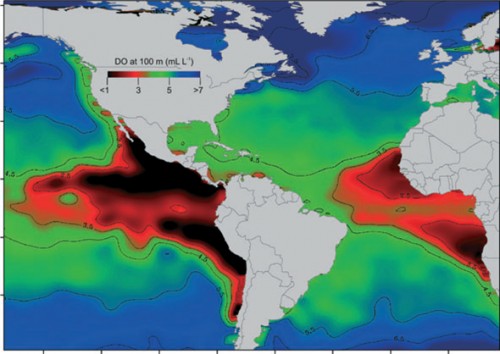A team of German and Canadian marine biologists have for the first time ever witnessed so-called ‘dead zones’ in the Atlantic Ocean – places where no life can thrive, owing to there being almost no dissolved oxygen in the water.
Zones depleted of oxygen do exist in nature and have previously been discovered along populated coastal areas off the eastern and southern coasts of the United States and the Baltic Sea. But this is the first time such a place has been observed in the open ocean.
In a paper published in the journal Biogeosciences, researchers outline the existence of pockets of low-oxygenated patches of water in the Atlantic Ocean.
They are vast – sometimes 100 square miles in size. They travel constantly and are also seasonal. One of the biggest ever discovered forms each year in the Gulf of Mexico.
What makes these things tick is a hodge-podge of nutrients and microbes delivered from elsewhere. It’s a cyclical process: the nutrients are food for algae blooms, which in turn get devoured by microorganism. This creates waste, which is then eaten by other microbes. This process uses up a lot of oxygen, creating oxygen-free pockets.
he nutrient run-off here is a means of transportation. But if you’re an animal or fish, there are only two options: moving and surviving, or staying and dying.
Dead zones are normally found in shallow water, where not a lot of mixing takes place. The Atlantic Ocean is obviously very different, which creates a puzzle.

